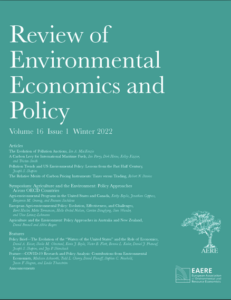
A Guide to Updating the US Government’s Social Cost of Carbon
Published July 19, 2022
Read
Climate Impact Lab (CIL)
Published November 11, 2022
The Climate Impact Lab (CIL) has developed the Data-driven Spatial Climate Impact Model (DSCIM), a robust, empirically-based model for estimating SCGHGs that is grounded in the best available science and economics and is consistent with recommendations set out by the National Academies of Sciences (NASEM). The theory, framework, and implementation of the CIL’s complete approach has been peer-reviewed and is published in Nature and The Quarterly Journal of Economics, with many technical elements, including the construction of empirical damage functions and valuation of uncertain and unequal local impacts, published in our earlier 2017 Science article. In this user manual, we provide an overview of the key components of an implementation of DSCIM, referred to as DSCIM-EPA, for the U.S. Environmental Protection Agency’s September 2022 draft technical report, “Report on the Social Cost of Greenhouse Gases: Estimates Incorporating Recent Scientific Advances.”
For the most recent version see: Version 092023-EPA
DSCIM will be an evolving model, continuously updated to include new categories of climate change impacts and incorporate the latest advances in science and economics. The DSCIM-EPA codebase for download and replication of SCGHG values used by EPA is available online at: https://github.com/ClimateImpactLab/dscim-epa.

Published July 19, 2022
Read
In comments submitted this week to the White House Office of Management and Budget, the Climate Impact Lab identifies important factors that the Biden administration should consider in developing updated estimates of the social cost of carbon.